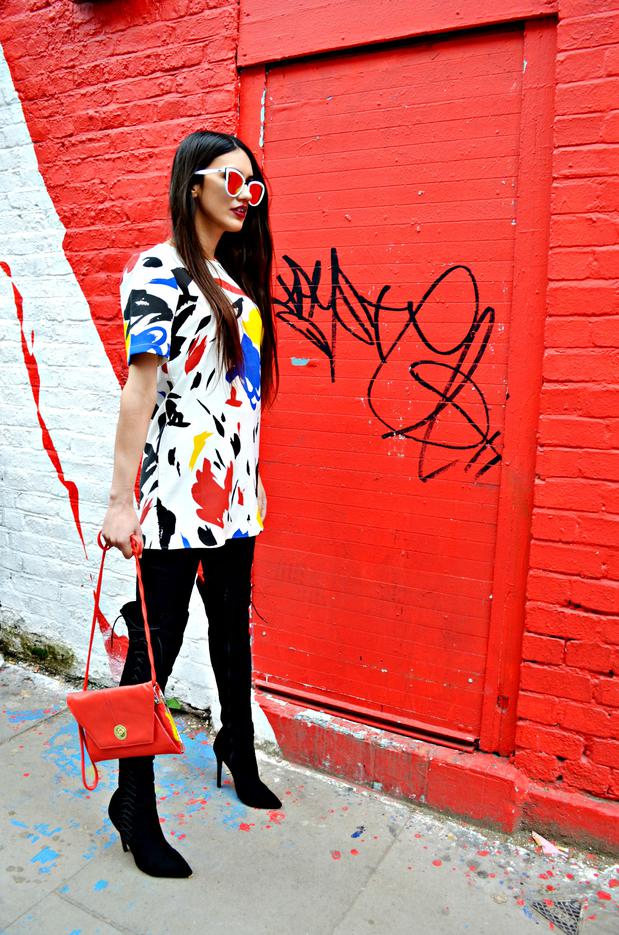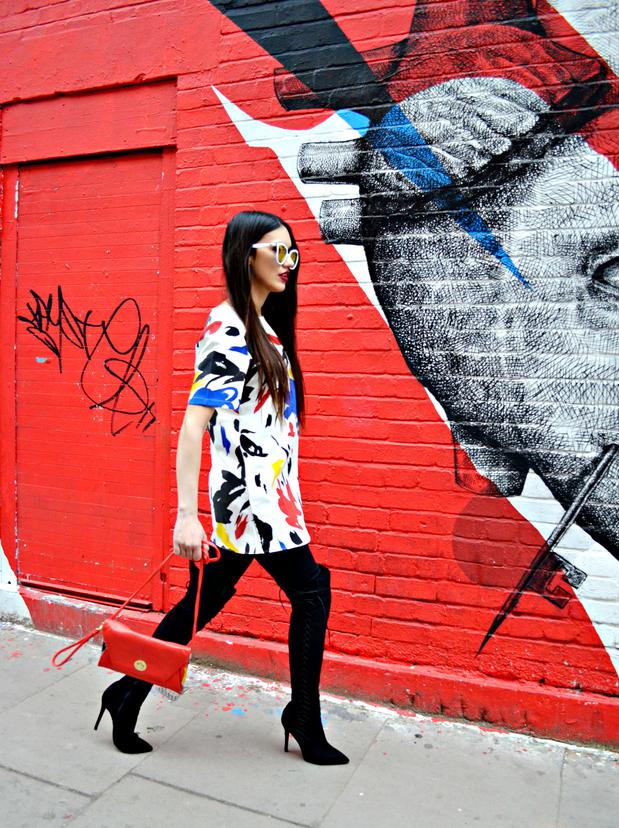Imperfect Beauty
‘ Distortion of beauty is in the eye of the beholder, Some call me fat, some call me skinny, Big or small we are attacked for having flaws But flaws are what makes us unique, Made in the image of perfection we fall short but there is beauty in imperfection and our flaws are what makes us beautiful’

Throughout the course of history societies perception of body image has altered in accordance to cultural and political customs of the time. In 1850 a full figure was deemed as ‘healthy’ and clothing was altered to give off the illusion of bigger buttocks and breasts whereas a slim figure was viewed as unhealthy. By the 21st century an extreme approach to dieting and fitness led to admiration of the ‘slimmer ‘ figure which symbolized the epitomy of health in the eyes of the law. Appreciation of healthy living is of course a contested medium of food control and led many to see their ‘lumps’ and ‘bumps’ as flawed rather than beautiful.
During the 90’s a legion of the worlds greatest supermodels- Naiomi Campbell, Linda Evangelista, Tyra Banks and Cindy Crawford- took the catwalk industry by storm with their ‘lean towering frames’ and high fashion features which many impressionable teenagers and young women saw as the epitomy of beauty. With the exception of Tyra the lean frame was seen as the standard that all aspiring models and young women should work torwards in order to become as revered as Cindy Crawford. Perception of body image was centered around weight and if you didn’t fit a certain weight age range the media like vultures would pick apart all self-confidence. It comes as no surprise to report that by mid 2000’s weight issues were at an all time high with many youths resorting to drastic measures in order to be seen as beautiful. Tummy tucks, anorexia and bulimia make up a large percentage of the measures taken to conform to the 21st century perception of ‘true’ feminity while mental health issues reached 1 in 4 in the Uk by 2015. 90% of those diagnosed with mental health issues received no support and instead faced discrimination and abuse for asking for help.
It is reported that the catwalk industry only uses ‘size zero’ models who are either forced into losing weight or are naturally slim. As someone who has suffered abuse for being too ‘slim’ is it any wonder that young people feel that their identities are defined by weight and consequently feel uncomfortable in their own skin. The media manipulates us into believing that we are never good enough and for many the catwalk industries perception of anorexia as the norm is not ok. Forcing someone to lose weight not only undermines their confidence but it also takes away their identity. How many of you have been teased because of how slim or big you are? I would hazard a guess at least 95% and that is because we have been institutionalized or brainwashed into believing anorexia is the norm.
2015 saw the emergence of plus size models- after a series of boycotts against certain catwalk designers- such as Tess Holliday who maintained the mantra that ‘big is beautiful’ and embraced her hourglass figure. It certainly makes a refreshing change from ‘size zero’ models but going from one extreme to another can dent youths confidence. Whereas a decade ago slim bodied models were seen as beautiful it is now a curvaceous fuller figure that appears to be healthier and more beautiful to the eyes of the average population. But I contest both theories, we are told that we are too slim or too big but why can’t we have the choice to determine what is beautiful? I am not confident in my figure because many assume you are not eating or that your anorexic but when you are naturally slim and eat well it can be difficult to feel at ease with your own body image.
In the catwalk industry there is no happy medium, you are either perceived to be too slim or too big but why are our catwalks so obsessed with body image when the consequences can be so fatal? In 2006 Uruguayan model, Luisel Ramos, 22, died of heart failure after starving herself in preparation for a show. In November that year another model, 21-year-old Brazilian Ana Carolina Reston, died from anorexia. These women were impressionable and the catwalk industry saw them as ‘easy pickings’- vunerable, young and eager to please Luisel and Ana would do anything to become ‘top models’. After the backlash faced by the public Milan banned underweight models and added ‘healthier’ models to their catwalks to give off the impression that clothing is all inclusive.
Except the irony is that the catwalk industry is not inclusive and does not promote a positive attitude to body image. Jane Druker, the editor of Healthy magazine – which promotes “health and wellbeing” – admitted that one of its cover models, Kamilla Wladyka, was so thin in real life that her image was radically retouched before appearing on the cover. And Jane is not the only one, many catwalk ad campaigns are drastically retouched to give slimmer models a fuller frame in order to show they are not ‘violating’ any terms and conditions of their contracts.
By September 2015 30,000 consumers fought back against ‘ultra’ thin models signing petitions to carry out much needed health checks. France and Spain now bans models with a BMI under 18 while Italy asks models to show health certificates under a self-regulation code. However I believe that quarterly health checks rather than BMI should determine whether a model is healthy enough to work. As someone who is underweight due to health issues my BMI is considered below the norm but contrary to popular belief I eat a standard amount of food and it is only because I am unwell that my BMI does not increase. It begs us to question therefore are catwalks now saying that a size 6 to 8 frame is no longer considered appropriate for the catwalk industry? If that is the case then I beg to differ- genetics can often determine our body shape and that means we are usually below or above the standard norm which in my eyes is ok. As long as models and young people are eating healthily and exercising it does not matter what weight they are because big is beautiful and small is stunning.

Let us challenge body weight ideals and feel beautiful in our own skin
Photography: Jumanna Khanom
Location: Brick Lane
Top: Zara
Trousers: Topshop
Boots Lily Lulu
Bag: Lollipop
Sunglasses: Quay Australia
I love the precious info anyone supply in your content. Let me search for your blog post as well as take a look at once again listed here regularly.. niche targeted email campaign We are alternatively sure I will find out many innovative material listed here! All the best for the!
I totally agree with you. I think there’s is such a warped view of what is “normal” and I definitely think that my own battle with anorexia stemmed from believing that I needed to be thin to be beautiful.